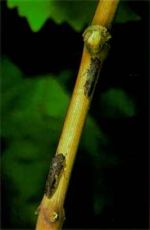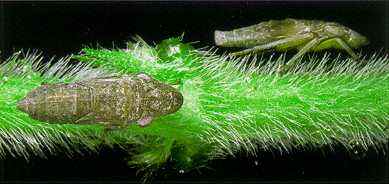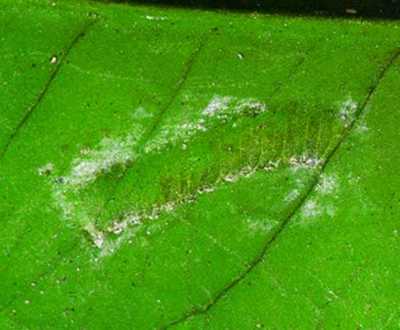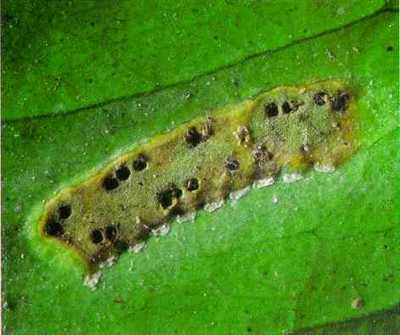Resource: Pierce's Disease Resistant Winegrape Releases
Information provided by ANR Communications Services for the University of California Pierce's Disease Research and Emergency Response Task Force. You may download a copy from the Division of Agriculture and Natural Resources web site at http://danr.ucop.edu or from the Communications Services web site at http://danrcs.ucdavis.edu http://ucipm/PMG/r302101211.html - UC Pest Management Guidelines
 Glassy-winged sharpshooter (Homalodisca coagulata) is a serious new pest in California. It is a particular threat to California vineyards due to its ability to spread Xylella fastidiosathe bacterium that causes Pierce's disease. Pierce's disease kills grapevines, and there are no effective treatments for it.
Glassy-winged sharpshooter (Homalodisca coagulata) is a serious new pest in California. It is a particular threat to California vineyards due to its ability to spread Xylella fastidiosathe bacterium that causes Pierce's disease. Pierce's disease kills grapevines, and there are no effective treatments for it.
IDENTIFICATION
Mature Glassy-winged Sharpshooters
 |
 |
The Glassy-winged Sharpshooter gets its name from its transparent wings.
Glassy-winged Sharpshooter nymphs

Glassy-winged Sharpshooter vs. Bluegreen Sharpshooter
 |
Glassy-winged Sharpshooters are large insects about 1/2 inch long.
The Glassy-winged Sharpshooter is shown next to the smaller Bluegreen Sharpshooter.
DETECTION
Fruit White Wash

Egg Masses

Parasitized Egg Masses

LIFECYCLE
Glassy-Winged Sharpshooter
Generalized Lifecycle

Glassy-winged sharpshooters overwinter as adults and begin laying egg masses in late February through May. This first generation matures as adults in late May through late August. Second generation eggs masses are laid starting in mid-June through late September, which develop into over-wintering adults.
Additional Site of interest:
http://www.cnr.berkeley.edu/xylella/ - XYLELLA FASTIDIOSA WEB SITE
http://plant.cdfa.ca.gov/gwss/ - CDFA'S PD/GWSS SITE
http://ucceventura.xlrn.ucsb.edu/IPM/IPMHome.htm - Phil A. Phillips - Integrated Pest Management
